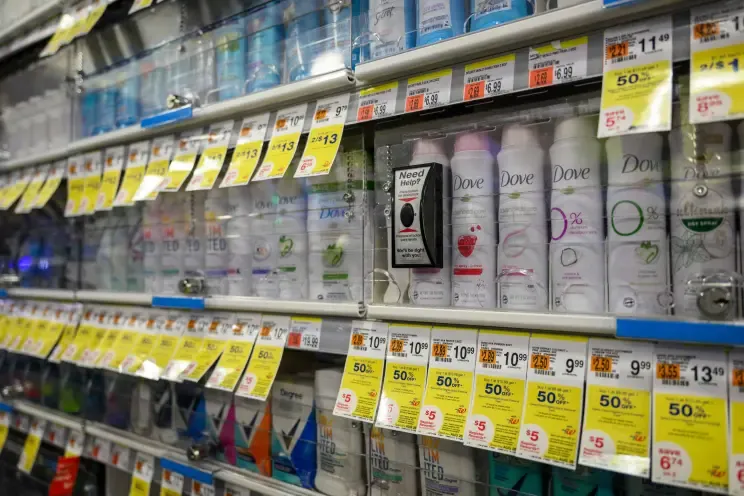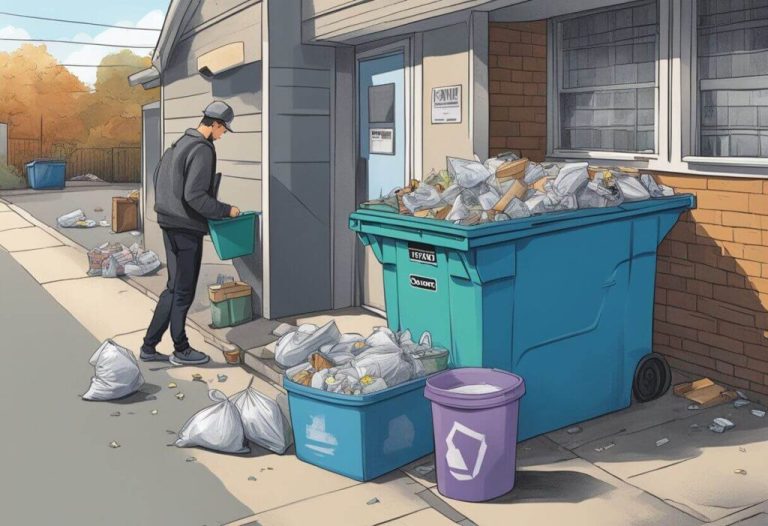During the 1970s and 1980s, New York City witnessed an increase in crime rates and social disorder that resulted in the displacement of hundreds of thousands of residents and businesses.
In just a matter of years, a number of communities found themselves without even the most basic amenities such as supermarkets and drugstores. The once bustling shopping districts were now filled with empty storefronts, leaving residents with limited access to necessary goods and services.
In the 1990s, a decline in crime rates and a subsequent resurgence of neighborhoods in major cities like New York paved the way for national retailers to begin venturing into areas they had previously shunned. This marked a significant shift in the retail industry, as more and more businesses recognized the potential of these once-neglected communities.
The retail industry has led to the creation of numerous job opportunities and the establishment of several stores in New York. This phenomenon has resulted in a significant boost to the local economy. It is evident that the retail sector has experienced a tremendous revival, which has contributed to the growth of the industry. The positive impact has been felt not only by the retailers themselves but also by the community as a whole. Thousands of people have gained employment, and the growth of the retail industry has been a welcome development for the city of New York.
Retail stores are facing a new era of shutdowns due to increasing incidents of retail theft. The gains made by these stores are quickly disappearing as shoplifting and vandalism become more rampant. The impact is so severe that even the swankiest Duane Reade store located in the Trump building in Manhattan is set to close down due to such issues.
Hard-won recovery
New York’s retailers had a long road to recovery after the tumultuous times of the 1970s and 1980s, where disorder and crime ran rampant. It was a slow process, spanning several decades, but eventually, the city’s retail industry was able to bounce back.
For over two decades, Harlem, a neighborhood with a population of over 100,000, was devoid of any major supermarket chain, leaving entire districts without access to basic shopping choices.
In the past, the South Bronx and neighborhoods like Bushwick in Brooklyn were bustling shopping districts. Unfortunately, today, many storefronts in these areas are boarded up as a result of rioting and arson.
Major retail chains like Home Depot, Lowe’s, and Target, which offered the essential items that people needed in their daily lives, avoided the city. This resulted in a significant loss of revenue, as demonstrated by the doubling of violent thefts at Target this year, according to recent reports.
Back in the early 1980s, a study revealed that the residents of Queens spent a staggering amount of more than $1 billion annually, which accounted for half of their purchasing power, on shopping in Nassau County.
According to a consumer survey conducted in the early 1990s, more than half (56%) of the residents living in New York City would leave the city at least once a month for shopping purposes.
According to a survey, almost 30% of respondents stated that their purpose of visit was to shop at stores that were not present in the city. It’s ironic how New York City, which was once renowned as one of the world’s top retail destinations, now sees its own residents leaving the city to shop elsewhere.
Residents refrained from purchasing goods locally due to the high prices associated with shopping in a retail desert. Essentially, the cost of almost everything was higher in these areas, making it less attractive for locals to invest their money in the community.
The mid-1990s marked the onset of a significant shift in the course of events.
Despite the city’s big incentives for businesses, Downtown Brooklyn has struggled to attract retailers due to its high crime rates. This issue has been highlighted by the recent tragic incident where a CVS store manager was killed during a shoplifting incident, as reported by the New York Post.
In the latter half of the 1990s, the decrease in crime rates led to a surge in investments, particularly in the construction of numerous retail spaces spanning hundreds of thousands of square feet.
With a similar revitalization, Bushwick has become a hub for food enthusiasts.
With zoning changes that permitted the easier redevelopment of vacant spaces, big chains flocked to Queens, Brooklyn, and even Manhattan. These changes opened up opportunities for the city to welcome them with open arms.
The outcome of this transformation is a revolutionary time for investment and employment in the retail industry.
Between 1992 and 2016, the retail sector in the city experienced remarkable growth, with a whopping 56% increase in jobs. Starting from a low point of 243,000 jobs in 1992, the sector added a staggering 135,000 jobs by 2016.
In recent times, it has become a common occurrence to come across news of big retailers shutting down their stores because of low profitability. Target, Whole Foods, and national drugstore chains are among the prominent names that have made such announcements. The neighborhoods of cities such as Chicago, Portland, and Seattle have become increasingly chaotic, which has contributed to the financial struggles faced by these retailers.
According to a recent retail census, New York City has seen a significant loss of around 675 outlets run by national chains since the start of the pandemic. This news highlights the devastating impact that the pandemic has had on the city’s retail industry. The closure of these outlets not only affects the businesses themselves but also has an impact on the city’s economy and the livelihoods of those employed by these chains.
The significant decrease in the population of the city can be largely attributed to three major factors. Firstly, the COVID shutdowns had a devastating impact on the city’s economy, which led to many people leaving the city in search of better opportunities. Secondly, the rise in social disorder after the Black Lives Matter protests in June 2020 also contributed to the exodus of residents. Lastly, the general feeling of unease and insecurity caused by these events also played a role in the decline of the city’s population.
It is concerning to note that even as the city is slowly recovering from the pandemic, retail theft has become a rampant problem. This can be attributed to the bail reform and reduced charges for shoplifting, both of which have contributed to the increase in such incidents. According to a report, the use of AI and security cameras could help curb this growing shoplifting epidemic.
Despite the lifting of pandemic restrictions, New York City is still struggling to recover its pre-pandemic retail job numbers. Currently, the city has 60,000 fewer retailer jobs compared to the height of its pre-pandemic boom. In contrast, other cities such as Dallas, Houston, Nashville, Orlando, Tampa, Charlotte, and Raleigh have successfully regained and even exceeded their pre-pandemic retail job numbers. This indicates that New York City is still grappling with the aftermath of the pandemic and its impact on the retail sector.
The decline of city drug stores is a growing concern, with Duane Reade (owned by Walgreens) and Rite Aid being two significant chains that have closed over 100 stores in the city since 2019. This trend is alarming, and it’s essential to find a way to prevent the closure of more drug stores in urban areas.
Retail stores are facing numerous challenges these days, ranging from stiff competition in the online space to supply chain disruptions. Unfortunately, they now have yet another problem to deal with – rampant theft. Dollar General, for instance, recently reported significant losses due to theft and weak consumer spending. This is a major concern for brick and mortar stores, who are already struggling to stay afloat amidst the changing retail landscape.
Stopping theft in New York is a challenging task, as highlighted by one of Rite Aid’s top executives.
It’s always important to provide additional resources or references for readers to explore and learn more about a particular topic. That’s why the phrase “see also” can be so useful when used appropriately. By including this phrase in your content, you’re signaling to readers that there are related resources they may find valuable. Whether you’re writing a blog post, academic paper, or any other type of content, it’s always a good idea to include “see also” with links or references to other relevant sources. This not only helps to provide additional context and information, but it can also boost your credibility as a knowledgeable and well-researched writer. So next time you’re creating content, don’t forget to include “see also” and point your readers towards more valuable resources.
According to him, the main issue lies in the environment in which businesses operate, especially in New York City. He believes that the prevalent atmosphere, as portrayed in social media and the news, is not favorable for reducing shrinkage or theft.
Many crucial stores are vanishing as well.
Residents in communities like Glen Oaks, Queens, are left without a local supermarket as Key Food, a chain of small supermarkets, has closed down 10 of its outlets.
Dollar Tree, a popular chain of discount stores, has been grappling with increasing incidents of theft, which has severely impacted its financial performance. As a result, the company has recently closed down 12 of its stores located in New York City.
The retail stores that are still functioning have decided to discontinue the sale of certain popular branded products that are frequently stolen by shoplifters.
Around three decades ago, policymakers started to use the term “deserts” to refer to areas that do not have access to crucial retailers, particularly supermarkets.
Others took it a step further and coined the term “retail apartheid” to describe the issue, insinuating that stores were deliberately discriminating against certain neighborhoods and their inhabitants.
The local government made multiple attempts to attract stores, utilizing strategies such as offering incentives and publicly pressuring them. However, it was the resurgence of neighborhoods due to decreasing crime rates that ultimately proved successful in bringing in businesses.
It appears that we are on the brink of a fresh era marked by a proliferation of retail deserts.
The task of attributing this unfortunate trend to racial bias or firms being hesitant to operate in certain areas will prove to be challenging for policymakers.
It’s encouraging to see that many of America’s leading stores are demonstrating a willingness to invest in urban communities. This commitment to supporting local areas is a positive step forward, and it’s heartening to know that major retailers are recognizing the importance of contributing to the growth and well-being of the communities they serve.
Poor public policy is causing a problem that is driving people away, resulting in a loss for both residents and shoppers.
Read More:
- Police: Man Fires Shots at Car Moving ‘Too Slowly’ on LIE
- NYPD Reports Vendors Slash Man’s Arm in Manhattan Subway Train Fight



